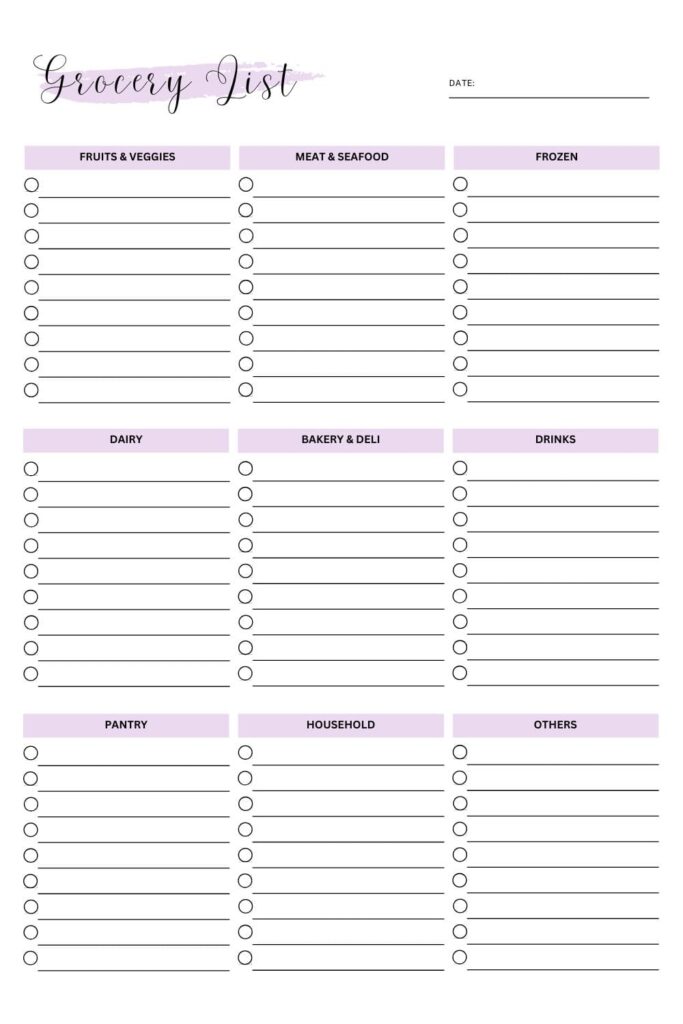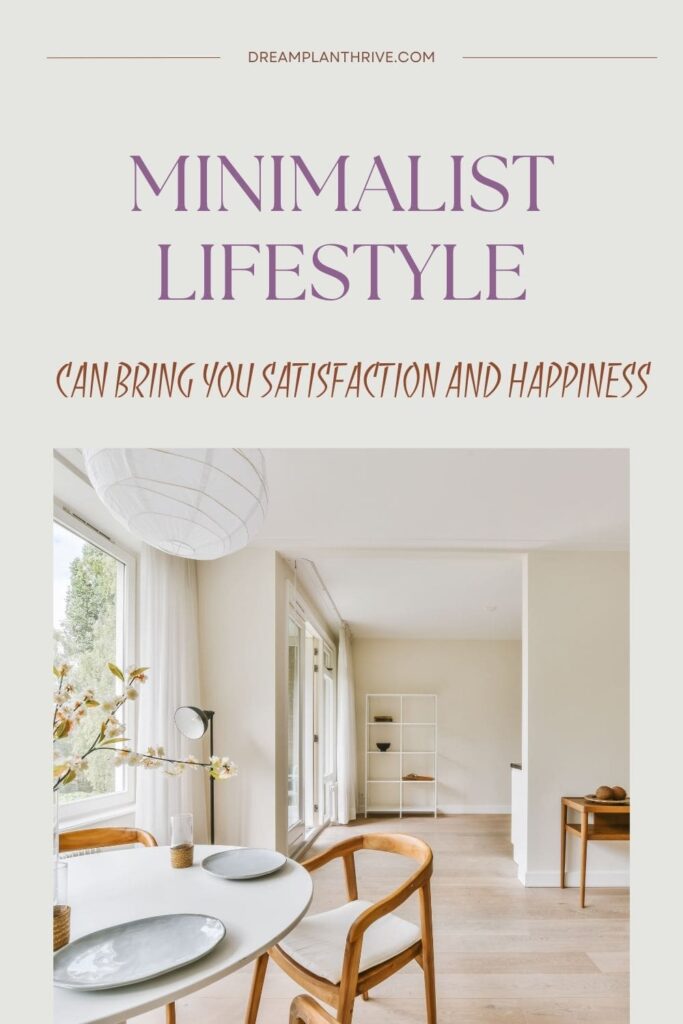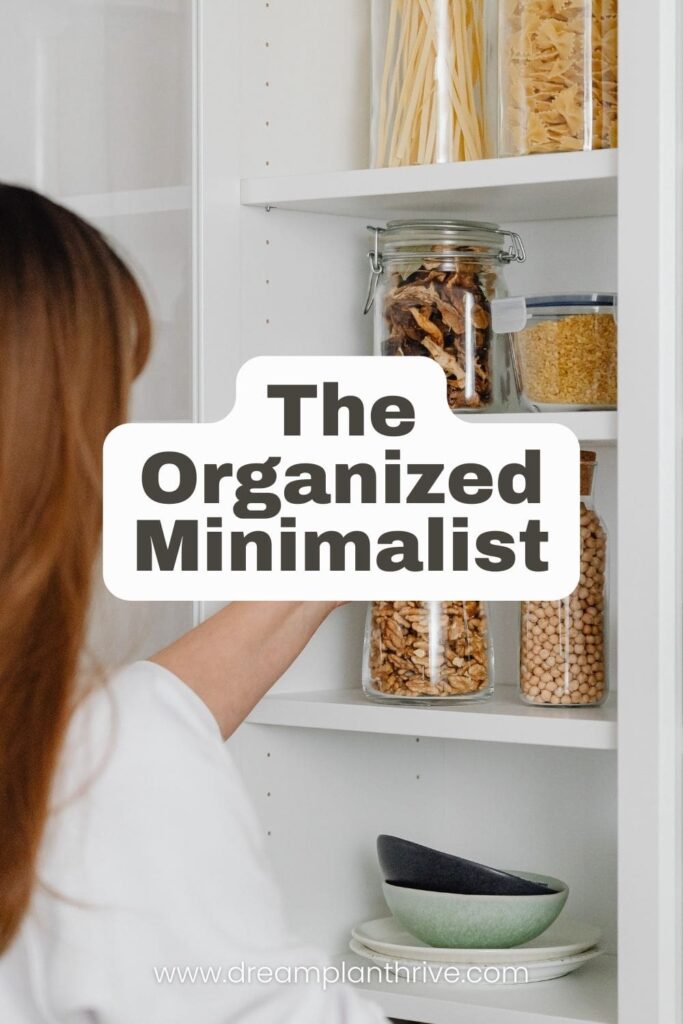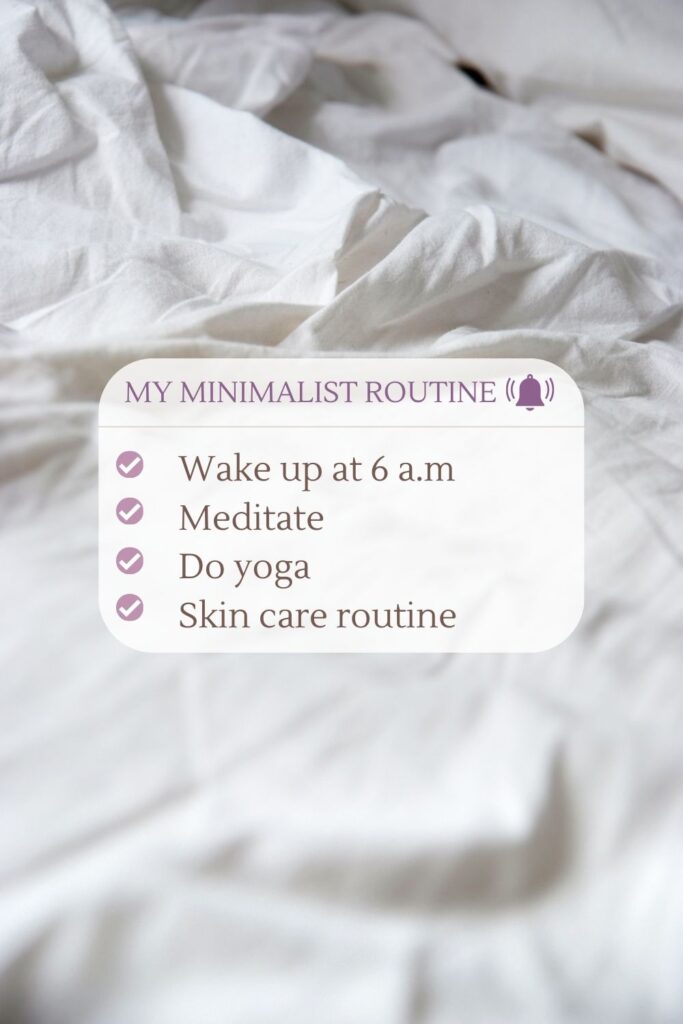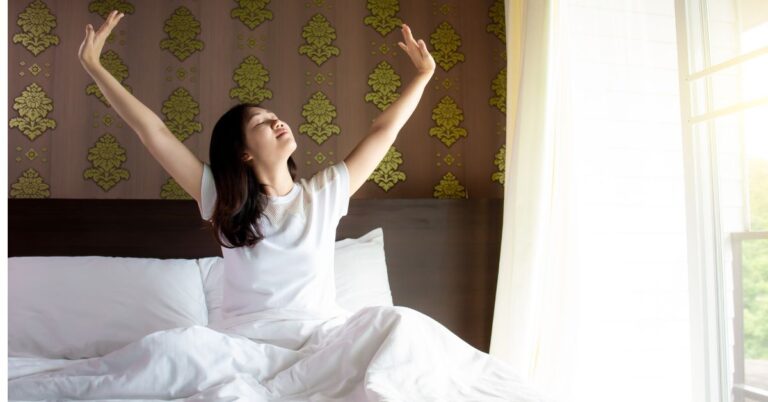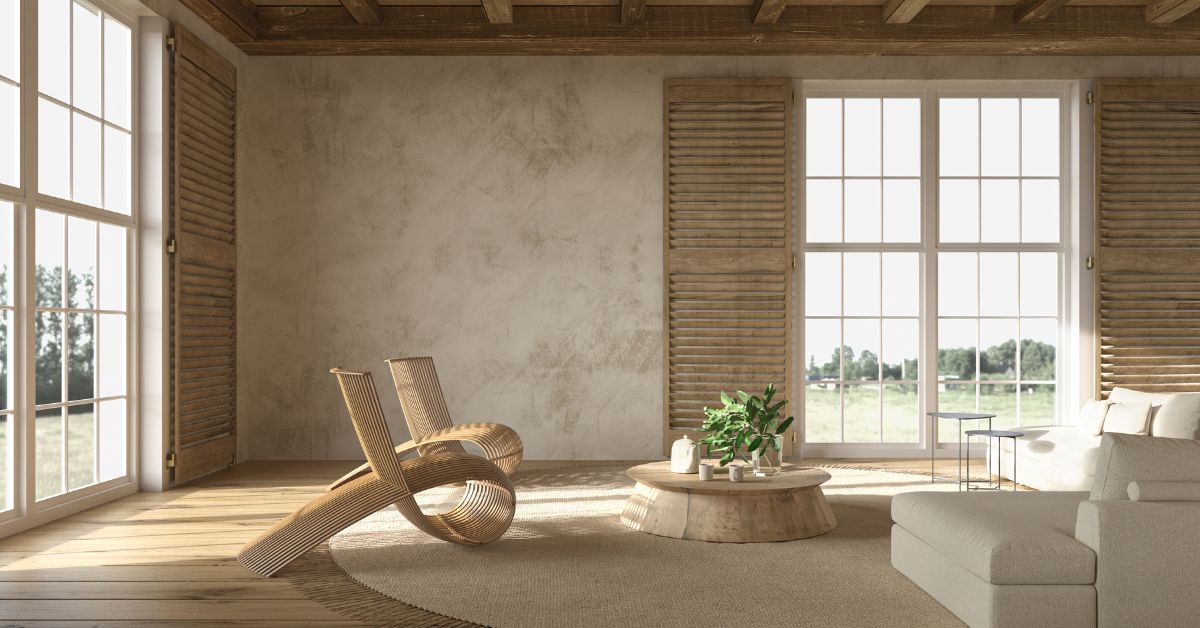
Minimalism isn’t just about decluttering your home or owning fewer things—it’s about creating a life that feels lighter, more intentional, and deeply meaningful. In today’s world of constant consumption and digital overload, a minimalist lifestyle offers a refreshing way to focus on what truly matters. Imagine simplifying your space, your schedule, and even your mind, all while gaining more clarity and peace. This guide will walk you through practical steps to embrace minimalism, build habits that stick, and discover the joy of living with less. It’s not about sacrifice—it’s about designing a life that aligns with your values and brings real happiness.
This post contains affiliate links, which means I may receive a small commission, at no cost to you, if you make a purchase through a link. Read the full disclosure here.
Why Minimalism?
Adopting a minimalist lifestyle brings many benefits that extend far beyond a tidy and clean living space:
- Reduced stress: A clutter-free environment can lead to a clearer mind.
- Financial freedom: Intentional spending curtails wasteful habits.
- Stronger relationships: Prioritizing experiences over things fosters meaningful connections.
- Sustainability: Consuming less reduces your environmental footprint.
- Increased focus: Simplifying your schedule allows you to concentrate on what truly matters.
Being organized and owning only the things you really need creates mental clarity and helps you become focused when carrying out an activity, allowing your mind to rest and not be distracted by all the clutter around you.
This lifestyle naturally brings with it lower financial expenses because you are more careful about the investment you make, comparing quality things that truly serve in your life.
Having fewer possessions that require your attention and time—our most precious resource—becomes abundantly available for other activities, relationships, and meaningful experiences that align with your values.
Minimalism also has a gentle impact on the environment; by no longer buying excess goods, you gain the freedom to live an intentional life and pivot your life direction with ease.
Core Principles of Sustainable Minimalism
Intentional Consumption
The foundation of minimalist living starts with changing your relationship with consumption. This means:
1. Implementing a 72-hour rule before making non-essential purchases.
When you feel the urge to buy something non-essential (anything beyond necessities like groceries or toiletries), you deliberately wait 72 hours (3 days) before making the purchase. During this cooling-off period, you give yourself time to:
- Reflect on whether you truly need or want the item
- Consider if it aligns with your values and priorities
- Think about where you’ll store it and how often you’ll use it
- Determine if it’s worth the money or if those funds could better serve another purpose
This simple waiting period helps eliminate impulse purchases driven by momentary emotions or clever marketing. Often, after 72 hours, the initial excitement fades and you realize you don’t actually need or want the item after all. For items that pass this test—those you still genuinely want after three days—you can feel more confident that they’ll be meaningful additions to your life rather than future clutter.
It’s a particularly effective technique for curbing online shopping habits, where the ease of clicking “buy now” can lead to accumulating things you don’t really need.
2. Creating specific shopping lists for everything, not just groceries.
Organizing your purchases with lists is a great way to embrace minimalism! Here are several types of lists you can create to help manage your shopping and possessions more effectively:
- Essentials List: Items you absolutely need for daily living, like groceries, personal hygiene products, and household essentials.
- Replacement List: Note items that need replacing, such as worn-out clothing, electronics, or furniture, so you buy only when necessary.
- Wish List: Add non-essential items here and wait for a set period (like 30 days) before purchasing to reduce impulse buys.
- Seasonal Items List: List clothing, decorations, or tools needed seasonally to ensure you buy only what is necessary for each season.
- Gifts List: Track gift ideas for friends and family throughout the year to spread out spending and avoid last-minute shopping stress.
- Budget Tracker: Maintain a list or spreadsheet that tracks spending in various categories to oversee finances and identify potential cutbacks.
- One-In-One-Out List: When you buy a new item, choose an old item to donate or discard to maintain balance in your home’s item count.
- Unsubscribe List: List subscriptions or services you no longer need to remember to cancel them and avoid unnecessary expenses.
- DIY Projects List: If you enjoy crafting or DIY, keep a list of projects to tackle, ensuring you buy only the materials needed for each specific project.
3. Asking crucial questions before any purchase:
- “Do I already own something that serves this purpose?”
- “Where will this item live in my home?”
- “How long will I genuinely use this?”
- “Am I buying this out of emotion or necessity?”
Financial Minimalism
Finances play a pivotal role in a minimalist lifestyle. By aligning your spending with your values, you gain control over your money and reduce unnecessary stress.
Financial minimalism is a lifestyle that prioritizes financial efficiency and simplicity. It is a way of saving money and focusing on the quality of the things you buy, which can bring you satisfaction and happiness in life.
Having goals helps curb unnecessary expenses and creates a roadmap for financial stability.
Space Management
Your physical environment significantly impacts your mental state. Essential habits include:
- Focusing on quality over quantity in home furnishings.
- Establishing a “one in, one out” rule for new purchases.
- Creating designated homes for every item you own.
- Regular maintenance decluttering (monthly or seasonal).
- Implementing a family command center for organization.
Declutter and Maintain Your Home
A minimalist home isn’t about empty spaces or monochromatic aesthetics; it’s about creating an environment that supports your life’s purpose.
- Start with a whole-home declutter: Focus on one area at a time. Use the KonMari method (For me personally, her techniques worked wonderfully, and now the house is easy to maintain), or a simple keep/toss/donate system to pare down your belongings. Once your home is decluttered, implement a maintenance routine to prevent buildup.
- Sell or donate items: Let go of items quickly. Sell valuable items on platforms like Facebook Marketplace, or donate to shelters and charity shops. Avoid letting decluttered items linger in your space.
- Assign every item a home: One of the best ways to prevent clutter is by ensuring everything has a designated spot. Label shelves, drawers, and bins during the organization process.
- Clear your schedule: Minimalism isn’t just for physical spaces. Simplify your calendar by prioritizing meaningful activities and saying “no” to unnecessary obligations. A less busy schedule fosters mental clarity and reduces stress.
Building Sustainable Minimalist Habits
Daily Habits
- Make your bed immediately upon waking.
- Practice the “clean as you go” principle.
- Return items to their designated homes after use.
- Check your calendar and to-do list mindfully.
- Spend 10 minutes on quick decluttering.
Weekly Habits
- Meal plan to reduce food waste.
- Process and file paperwork.
- Review upcoming commitments.
- Declutter one small area.
- Digital cleanup (emails, photos, files).
Monthly Habits
- Review and adjust your budget.
- Evaluate subscriptions and recurring expenses.
- Deep decluttering of one area.
- Assess calendar commitments.
- Review and donate unused items.
Transform Shopping Habits
Adopting minimalist shopping habits helps reduce clutter, save money, and make thoughtful purchasing decisions.
- Shop with a list: Plan every purchase. Whether it’s groceries, clothing, or home goods, a list helps you stick to your priorities and avoid impulse buys.
- Invest in quality over quantity: Buy fewer but better items. High-quality products often last longer and perform better, reducing the need for frequent replacements.
- Ask the right questions: Before purchasing, consider:
- Do I truly need this?
- Will it add value to my life?
- Does it have a designated place in my home?
- Am I buying this out of boredom or emotion?
- Adopt the one-in, one-out rule: For every new item you bring into your home, remove one (or more) to maintain balance.
- Clear your browser cache: Avoid the temptation of one-click online purchases by removing stored payment information. This extra step creates a pause to evaluate whether you truly need the item.
Reduce Waste and Live Sustainably
Minimalism aligns naturally with sustainability by reducing consumption and waste.
By making conscious choices in your daily routine, you will not only reduce your negative impact on the environment, but you will also have a simpler and more meaningful lifestyle because you will start consuming resources that bring true value to your life.
Conserve Energy and Resources
Practice mindful resource use:
- Turn off lights and electronics when not in use.
- Shorten showers and reduce water usage.
- Run full loads of laundry and dishes.
Meal Plan and Shop in Bulk
Plan meals to minimize food waste and reduce packaging by buying in bulk. Use glass jars or reusable containers to store bulk items.
Use What You Have
Resist the urge to replace items prematurely. Fully use products, from beauty items to food, before buying replacements.
Digital Minimalism
In our increasingly connected world, digital minimalism deserves special attention:
- Clean browser caches and saved payment information.
- Remove unused apps monthly.
- Turn off non-essential notifications.
- Practice regular digital detoxes.
- Unsubscribe from unnecessary emails.
- Create boundaries for screen time.
The Power of Saying “No”
One of the most powerful minimalist habits is learning to say “no.” This applies to:
- Social commitments that don’t align with your values.
- Free items that don’t serve a purpose.
- Additional responsibilities that overwhelm your schedule.
- Purchases that don’t support your goals.
- Time commitments that drain your energy.
Creating a Minimalist Routine
Establishing a consistent routine supports minimalist living:
Morning Routine
- Wake at the same time.
- Practice mindfulness or meditation.
- Plan your day intentionally.
- Prepare for the day without rushing.
Evening Routine
- Review tomorrow’s schedule.
- Quick 10-minute tidy.
- Digital sunset one hour before bed.
- Reflection and gratitude practice.
Measuring Progress
Track your minimalist journey through:
- Monthly spending reviews.
- Regular home inventory assessments.
- Digital storage audits.
- Time management evaluation.
- Energy level monitoring.
- Stress reduction assessment.
Common Challenges and Solutions
Family Resistance
- Lead by example.
- Start with personal spaces.
- Communicate benefits clearly.
- Make it fun and rewarding.
Sentimental Items
- Take photos before letting go.
- Keep one representative item.
- Share items with family members.
- Create digital memories.
“Just in Case” Mentality
- Track usage patterns.
- Calculate storage costs.
- Consider borrowing options.
- Set clear timeframes for use.
Building a Sustainable Future
Remember that minimalism is a journey, not a destination. The goal is to create lasting habits that support a simpler, more intentional life. Focus on progress over perfection, and celebrate small wins along the way.
Start with one area or habit that resonates most with you, and build from there. As you develop these minimalist habits, you’ll likely find that they naturally expand into other areas of your life, creating a more sustainable and fulfilling lifestyle.
The Transformative Power of Minimalism
Minimalism is not about deprivation; it’s about creating space for a life of abundance, purpose, and joy. By adopting minimalist habits, you can:
- Reclaim time for passions and loved ones.
- Achieve financial goals with intentional spending.
- Reduce your environmental impact.
- Cultivate a home and schedule that bring peace and clarity.
The journey to minimalism is deeply personal, and there is no one-size-fits-all approach. Start small, build sustainable habits, and focus on aligning your life with your values. In doing so, you’ll discover the beauty of less and the freedom it brings.
Ready to embrace minimalism? Begin with a single habit today and watch how simplicity transforms your life.


